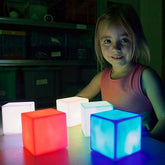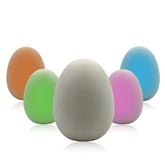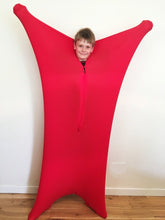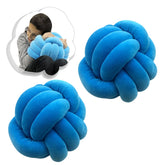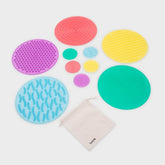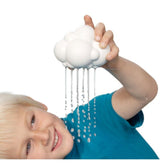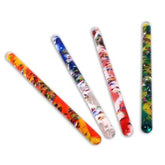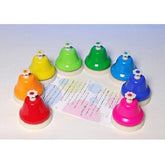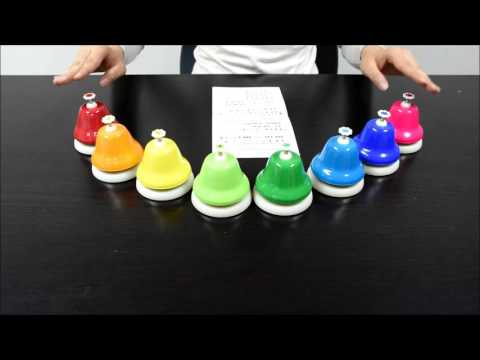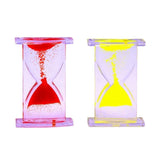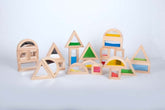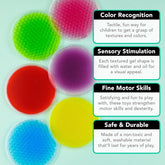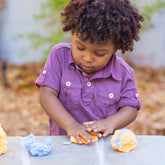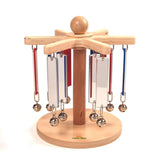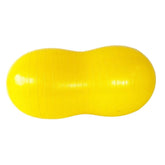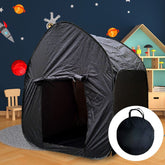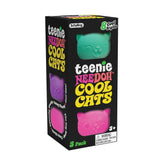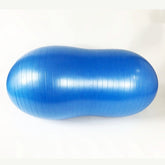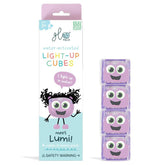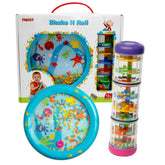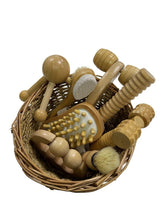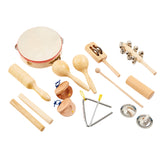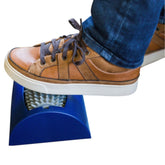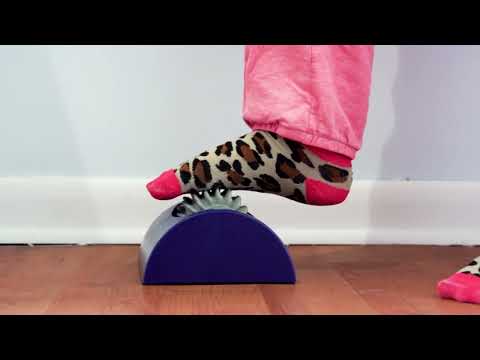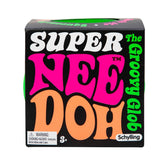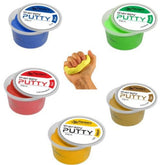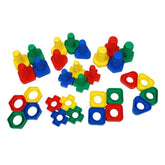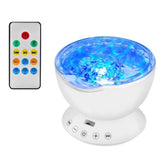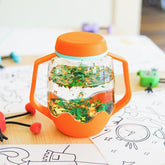Sensory Toys for Autism
Often people with additional needs will have a different sensory perception of the world and find it difficult to process the information they receive. To make their lives easier and less stressful, we find, stock and sell a range of learning resources and best autism toys for children with special needs.
View our extensive range of sensory toys for autism or contact us for further information or support. If we do not stock the product you are looking for, we are happy to point you in the right direction. If you need to know more about the eight senses have a read of our Unlocking the eight senses guide.
Filter
151 results
32
- 10
- 15
- 20
- 25
- 30
- 50
Best selling
- Featured
- Best selling
- Alphabetically, A-Z
- Alphabetically, Z-A
- Price, low to high
- Price, high to low
- Date, old to new
- Date, new to old
Sort
Sort by:
- Featured
- Best selling
- Alphabetically, A-Z
- Alphabetically, Z-A
- Price, low to high
- Price, high to low
- Date, old to new
- Date, new to old
-
Colour Changing Mood Block
Enhance any space with the gentle, soothing glow of our Colour Changing Mood Blocks. Perfect for sensory lighting or creating a relaxing ambiance, these cubes are sure to captivate and delight. Experience the magic of colour-changing illumination and elevate your surroundings with ease. Key...- £3.99 (£4.79 inc VAT)
- £3.99 (£4.79 inc VAT)
- (-0%)
- Unit price
- / per
-
Colour Changing Egg
Add atmosphere and ambience to any room in an instant with a Colour Changing Egg. These unusual egg-shaped lights glow and change colour gently between 6 colours. . Great to help create a relaxing and calming environment. . Sensory light up mood egg. Gradually colour changing...- £3.99 (£4.79 inc VAT)
- £3.99 (£4.79 inc VAT)
- (-0%)
- Unit price
- / per
-
Body Socks
With our 4-Way Stretch Lycra Sensory Body Sock, you can experience the ultimate in movement, proprioception, tactile input, and deep pressure therapy. A versatile sensory integration and play tool, it offers an engaging and therapeutic experience for children, teens, and adults. Benefits: Whole-Body Sensory...- £24.99 (£29.99 inc VAT)
- £24.99 (£29.99 inc VAT)
- (-0%)
- Unit price
- / per
-
Red
-
Green
-
Sensory Cuddle Ball
The Sensory Cuddle Ball is a soft, tactile, and wonderfully comforting sensory tool designed to help children calm, focus, and regulate through gentle deep-pressure input. Its unique shape and flexible design allow little hands to squeeze, hug, and manipulate the ball, offering a soothing...- £24.99 (£29.99 inc VAT)
- £24.99 (£29.99 inc VAT)
- (-0%)
- Unit price
- / per
-
TickiT SiliShapes® Sensory Circle Set - Pack size 10
Encourage sensory exploration, language development and gross motor skills with this award-winning TickiT SiliShapes® Sensory Circle Set. Perfect for children with special educational needs or disabilities (SEND), the set includes 5 large textured silicone discs and 5 matching smaller ones – each pair featuring...- £27.99 (£33.59 inc VAT)
£37.49- £27.99 (£33.59 inc VAT)
- (-25%)
- Unit price
- / per
-
Plui Rain Cloud
The Pluï Cloud is sure to inspire wonderful stories and gently introduces babies and toddlers to water. It delights and surprises and quickly becomes an indispensable accessory during bath time.Product information: A hidden mechanism allows adults to open the Cloud for cleaning. Perfect toy for water. Suitable for...- £10.99 (£13.19 inc VAT)
- £10.99 (£13.19 inc VAT)
- (-0%)
- Unit price
- / per
-
Glitter Tubes – Pack of 4
Bring calm, focus and visual delight with our Glitter Tubes – Pack of 4. These tactile sensory wands contain floating glitter in coloured gel-like fluid that produces a mesmerising effect as different shapes and colours drift and settle with movement. The pack includes four...- £14.99 (£17.99 inc VAT)
- £14.99 (£17.99 inc VAT)
- (-0%)
- Unit price
- / per
-
Fidget Kit 2
The Fidget Kit 2 a sensory toy kit. The kit contains a variety of fun and exciting sensory balls, blocks, buttons and tangles, that are sure to delight and entertain. Fun and easy for children to play with. Great for both group and one-on-one play. Encourages...- £29.99 (£35.99 inc VAT)
- £29.99 (£35.99 inc VAT)
- (-0%)
- Unit price
- / per
-
Matching Textures Bag For Tactile Play 20pk
Children will enjoy using their sense of touch to match the pairs, which also helps develop sensory awareness. Our Matching Textures pack of tactile pieces gives sensory stimulation involving touch and texture. Children who experience tactile sensory issues may struggle to tolerate certain sensations....- £18.49 (£22.19 inc VAT)
- £18.49 (£22.19 inc VAT)
- (-0%)
- Unit price
- / per
-
Rainbow Desk Bells
The Rainbow Desk Bells are a delightful and engaging way to introduce children to music and rhythm. Each of the eight brightly coloured bells produces a clear, accurate tone when the button on top is pressed, making them ideal for children who may struggle...- £30.99 (£37.19 inc VAT)
- £30.99 (£37.19 inc VAT)
- (-0%)
- Unit price
- / per
-
Liquid Mini Classic Timers (Set of 2)
You simply turn them upside down and watch the two differently coloured bubbles simultaneously walk down the staircase to the bottom of the tube. The liquid timer takes approx 1 min to run through. Please note these timers are for sensory calming and not...- £4.99 (£5.99 inc VAT)
- £4.99 (£5.99 inc VAT)
- (-0%)
- Unit price
- / per
-
TickiT Sensory Block Set 16pk
The TickiT Sensory Block Set is a captivating collection of 16 beautifully crafted building blocks, each with a unique sensory centre. Surrounded by smooth hardwood frames, the blocks are filled with a variety of materials such as colourful liquid, glitter, beads, and sand –...- £45.99 (£55.19 inc VAT)
- £45.99 (£55.19 inc VAT)
- (-0%)
- Unit price
- / per
-
Fidget Squidgy Textured Circles (Set of 6)
Fidget Squidgy Textured Circles. Autistic children may experience adverse reactions to play due to sensory defensiveness, particularly tactile sensitivity. This can reduce their participation in various contexts. Addressing these adverse reactions can help them become more adaptive in everyday situations. Therefore, providing tactile play...- £11.99 (£14.39 inc VAT)
- £11.99 (£14.39 inc VAT)
- (-0%)
- Unit price
- / per
-
Playfoam Combo 8-Pack
Discover endless creative possibilities with the Playfoam® Combo 8-Pack! This vibrant set includes 8 colourful Playfoam pods – 4 classic shades and 4 sparkly – that children can squish, shape, and sculpt into endless creations. Made from a unique bead-like structure, Playfoam provides a...- £6.49 (£7.79 inc VAT)
£8.49- £6.49 (£7.79 inc VAT)
- (-24%)
- Unit price
- / per
-
Mirror Chimeabout
The Mirror Chimeabout is a beautifully crafted wooden sensory toy that provides both visual delight and auditory stimulation. Perfect for children with SEN/ALN, the Chimeabout encourages sensory exploration, cause-and-effect learning, and focus through engaging play. Multi-sensory stimulation: combines sound, movement, and visual reflections. Cause...- £84.99 (£101.99 inc VAT)
- £84.99 (£101.99 inc VAT)
- (-0%)
- Unit price
- / per
-
Therapy Peanut Ball-Anti Burst - Yellow 35cm
The Therapy Peanut Ball-Anti Burst is ideal for therapeutic use, especially for those who have problems with balance and coordination. The shape of the peanut therapy ball encourages both children and adults to engage core muscles to build strength and improve posture. These...- £25.99 (£31.19 inc VAT)
- £25.99 (£31.19 inc VAT)
- (-0%)
- Unit price
- / per
-
Black Sensory Pop Up Tent for Den Making with Carry Case
Playzone Black Sensory Pop-Up Tent for Den Making (with Carry Case) is a versatile, darkened den space designed to create a calming environment where children can relax, regulate and engage with sensory play. With the included carry case, it’s easy to transport, set up...- £24.99 (£29.99 inc VAT)
- £24.99 (£29.99 inc VAT)
- (-0%)
- Unit price
- / per
-
Teenie NeeDoh Cool Cats (3 Pack)
Teenie NeeDoh Cool Cats (3 Pack) - Pawsitively Adorable Sensory Fun. Schylling presents the Teenie NeeDoh Cool Cats, a trio of delightful feline friends perfectly sized for small hands. This 3-pack of fidget toys is designed to captivate and entertain your tots with their...- £5.99 (£7.19 inc VAT)
- £5.99 (£7.19 inc VAT)
- (-0%)
- Unit price
- / per
-
Therapy Peanut Ball-Anti Burst - Blue 65cm
The Therapy Peanut Ball-Anti Burst is ideal for therapeutic use, especially for those who have problems with balance and coordination. The shape of the peanut therapy ball encourages both children and adults to engage core muscles to build strength and improve posture. These therapy balls...- £49.99 (£59.99 inc VAT)
- £49.99 (£59.99 inc VAT)
- (-0%)
- Unit price
- / per
-
Glo Pals Light up Sensory Toy - 4 Pack
Glo Pals Light Up Sensory Toy – 4 Pack is a vibrant set of four water-activated glowing cubes, each with a cheerful face and inviting light-up effect when dipped in water. They are perfect for bath time, water trays or sensory play stations. The...- £6.99 (£8.39 inc VAT)
£8.49- £6.99 (£8.39 inc VAT)
- (-18%)
- Unit price
- / per
-
Purple - Lumi
-
Blue - Blair
-
White - Party Pal
-
Yellow - Alex
-
Shake ‘N’ Roll Set
Shake 'n' Roll Gift Set – Sensory Musical Fun for Little Ones Delight your child with the Shake 'n' Roll Gift Set – an enchanting musical bundle designed to engage the senses and spark curiosity! This charming set includes a Mini Rainbomaker and an...- £14.99 (£17.99 inc VAT)
- £14.99 (£17.99 inc VAT)
- (-0%)
- Unit price
- / per
-
Sensory Massage Basket
TickiT Sensory Massage Basket is a beautifully curated kit of eight natural birch-wood massage rollers and soft brushes, presented in a woven willow and seagrass basket. Designed to stimulate tactile exploration and provide calming, grounding sensory feedback, this basket is ideal for children and...- £21.99 (£26.39 inc VAT)
- £21.99 (£26.39 inc VAT)
- (-0%)
- Unit price
- / per
-
TickiT Percussion Set 16pk
Percussion instruments can be used in one to one play or in a group setting and can help in a variety of ways; A fun way of creating rhythms and musical patterns, good for relieving stress. Improves coordination and a sense of timing. Improves...- £24.99 (£29.99 inc VAT)
£29.49- £24.99 (£29.99 inc VAT)
- (-15%)
- Unit price
- / per
-
Fidget Foot Roller
Details Fidget Foot Roller is Silent which allows the user to burn excess energy whilst in a seated or standing position. This can allow the user to increase their focus/concentration in the classroom or work environment. Helps Calm the user: Reduces restlessness as the...- £29.99 (£35.99 inc VAT)
- £29.99 (£35.99 inc VAT)
- (-0%)
- Unit price
- / per
-
Super NeeDoh
Schylling’s Super NeeDoh - The Ultimate Sensory Fidget Companion for All AgesCrafted from a non-toxic, dough-like material, Super NeeDoh is designed to provide endless fidget-friendly fun. Squeeze, squish, pull, and smush - this stress ball is perfect for on-the-go fidgeting or as a reliable...- £7.99 (£9.59 inc VAT)
£10.99- £7.99 (£9.59 inc VAT)
- (-27%)
- Unit price
- / per
-
Therapy Putty
Therapy Putty is a great way to effectively exercise and strengthen your hands. Uses: Perfect for rehabilitation, physical or occupational therapy, fidget toy, or stress reliever. Using the therapy putty strengthens the hand muscles, improves fine motor skills and relieves stress. Squeeze, pinch, stretch, and twist...- £15.99 (£19.19 inc VAT)
- £15.99 (£19.19 inc VAT)
- (-0%)
- Unit price
- / per
-
Senseez Bumpy Turtle
This lovable animal comes with a tail that can also be used to rub between fingers or across the face for extra tactile stimulation. Children that have trouble sitting for meals, stories, car rides, school work, or anything else will be comforted by the...- £34.99 (£41.99 inc VAT)
- £34.99 (£41.99 inc VAT)
- (-0%)
- Unit price
- / per
-
EDX Education Nuts and Bolts 32pk
They also have great educational value. The toy is excellent for developing hand-eye coordination and manipulation skills. Contains 32 pieces. Size: 60mm. Age: Suitable from 18 months+ Supports the following areas of learning: Physical Development - motor skills. Understanding the World - colour. Maths -...- £11.99 (£14.39 inc VAT)
- £11.99 (£14.39 inc VAT)
- (-0%)
- Unit price
- / per
-
Fidget Infinity Cube
Elevate your fidgeting experience with the sleek and stylish Infinity Fidget Cube. This compact, pocket-sized cube consists of eight interconnected mini-cubes that you can rotate and fold in any direction, offering endless configurations and smooth, satisfying movement. Designed to relieve stress, improve focus, and...- £3.49 (£4.19 inc VAT)
- £3.49 (£4.19 inc VAT)
- (-0%)
- Unit price
- / per
-
Portable Ocean Wave Projector With Sounds & Speaker
Transform any space into a calming seascape with the Portable Ocean Wave Projector With Sounds & Speaker. This compact and USB-charged device combines soothing wave-like light projections with built-in audio to create an immersive sensory experience. Ideal for bedrooms, sensory rooms, or quiet corners,...- £27.49 (£32.99 inc VAT)
- £27.49 (£32.99 inc VAT)
- (-0%)
- Unit price
- / per
-
Glo Pals Sensory Jar
Glo Pals Sensory Jar is a magical, light-up jar designed to bring soothing visual feedback and hands-on engagement to sensory play. Just add water, and this jar lights up with an array of bright, calming colours. Tap it gently to rotate through the hues...- £19.49 (£23.39 inc VAT)
- £19.49 (£23.39 inc VAT)
- (-0%)
- Unit price
- / per
-
Purple
-
Blue
-
Yellow
-
Sensory Square Massage Cushion
Vibrating cushions are effective at providing a gentle and engaging stimulus for children and adults with sensory processing disorders such as autism. They can provide sensory feedback or help to build sensation tolerance in children who are hypersensitive and help to make them feel...- £29.99 (£35.99 inc VAT)
- £29.99 (£35.99 inc VAT)
- (-0%)
- Unit price
- / per









